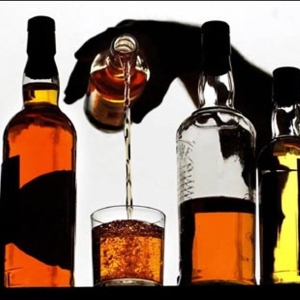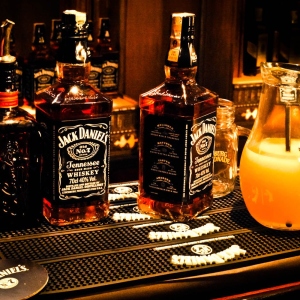Why cognac is not recommended to eat with lemon and what it is most combined with, you will find out by reading our article. Most likely, not all readers will agree with our statements, but we still advise you to listen to the recommendations. Moreover, they are based on the experience of the most famous world restaurateurs.
Should cognac have a bite with lemon?
In Russia, the fashion of cognac with lemon was introduced by Emperor Nicholas II. Whether he came up with this taste combination or someone advised him-there is no data about this. But it was during his reign that all the court and coming guests of cognac began to bite with sour citrus slices. Who did not really like this combination, it was proposed to sprinkle the lemon with sugar.
Modern restaurateurs never give their customers cognac with lemon. They argue that the ingress of citric acid in the mouth completely turns off the taste receptors and the client cannot fully enjoy the taste of a noble drink. A lemon cognac appetizer can be justified only in one case, if cognac on the table is very low quality with the obvious spirit of sivuish oils. In this case, the lemon just help to drown out the unpleasant taste in the mouth.

Than cognac is biting in his homeland - France
The birthplace of cognac is France. It is there, in the department called Sharant, there is a small city of cognac. The name of a strong fragrant drink and went from the name of this city. The French never drink low -quality cognac - it’s even difficult to find it on sale. Elite alcohol with excerpt at 10-25 years old, real gourmets drink without a snack at all. The French believe that in this way you can completely feel the taste and aroma of the drink.
Quite often, tourists in France fall on tasting of various varieties of the ridge and are very surprised that there is no snack on the tables. Instead, only good mineral water without gas is worth it. The French claim that it is water that completely refreshes the taste receptors and the client can feel even the thinnest shades of individual varieties.
The French offer cognacs with exposure for a little less than ten years to bite with chocolate or delicate paste of poultry meat. Such a set (cognac, chocolate or paste) is served in all restaurants of France.
Real connoisseurs of cognac prefer to drink it according to the “Three C” rule (Cafe, Cognac, Cigare). First of all, they drink a cup of coffee, after it they relish several sips of the skate, and then light a fragrant cigar.
Water, chocolate, paste, coffee and cigar - it is unlikely that such a snack will arrange a Russian connoisseur of alcohol. Unlike the French, who use cognac literally with a few sips, our man loves to see cognac on the table with bottles or countesses.

How can you eat cognac - the advice of professionals
Cognac itself is a drink very fragrant and saturated to taste. In order not to kill these wonderful sensations from good alcohol, professionals recommend serving on the table as a snack:
- Strawberries, grapes, pears, sweet apples.
- Maslins with bones or stuffed with cheese or nuts.
- Hard cheeses of elite varieties.
- Red or black caviar.
- Slightly salted salmon.
- Cooked with a minimum number of spices of veal or low -fat bird.
Having taken the above products as a basis, you can easily prepare various canapes and sandwiches. It is better to make canapes on special long skewers and combine, for example, the following products:
- Cheese and grapes.
- Olives and cheese.
- Meat and olives.
- Cheese, strawberries and walnuts.
- Semga, olives and fresh cucumber.
It is recommended to serve cognac to cognac on small lamps of white bread or in special baskets of fresh dough. For those guests who are used to drinking alcohol with liquids, you can serve cognac from white grapes or clean water without gas.

This video will tell about cognac: where they produce, manufacturing technology, how it is served, what dishes are needed for the drink and what can you eat a noble drink.






























